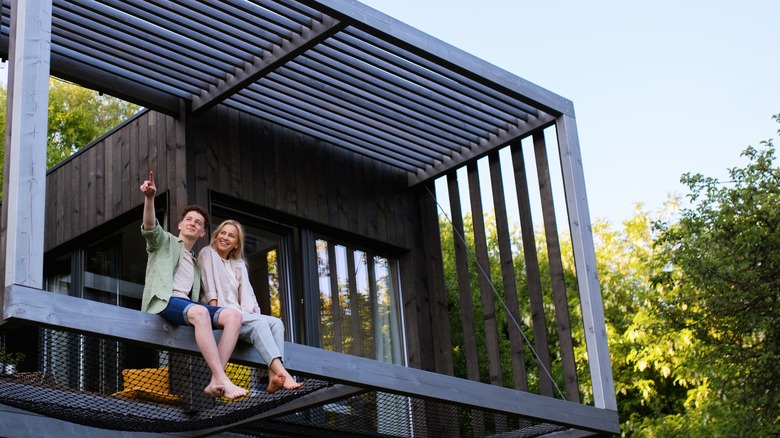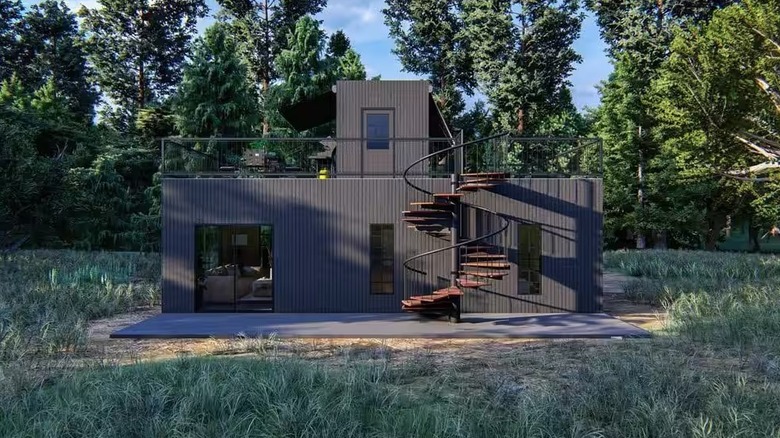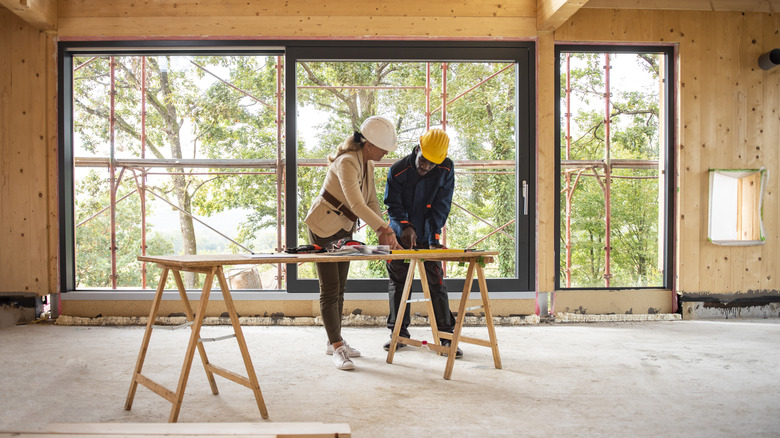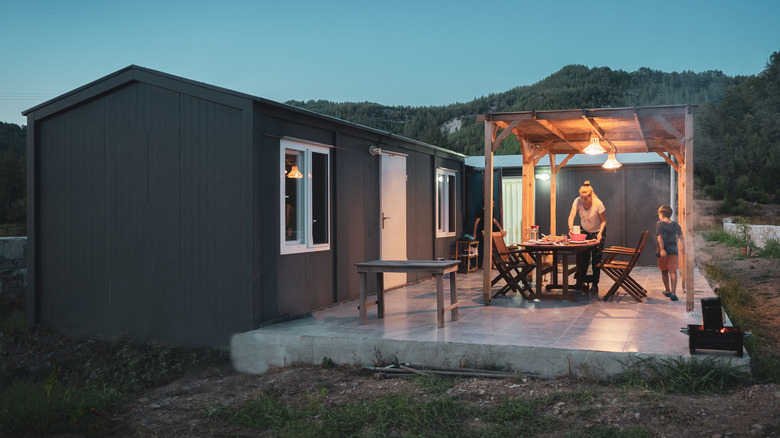Is It Worth Investing In A Home Depot Tiny Home?
We may receive a commission on purchases made from links.
While tiny homes may seem like a relatively new phenomenon, pre-fabricated home kits in general have been around for decades. Some of the first pre-fabricated homes in America date back to World War II, when the government ordered simple, quick homes to be built to accommodate the growing needs of soldiers, veterans, and their families. Today, many people still rely on simple building patterns and DIY kits to create affordable housing. Instead of depending on government-issued prefab patterns, you can now purchase a tiny home kit from Home Depot for $44,000. At first glance, it's easy to see why Home Depot's tiny home kits have attracted so much attention — they can be a good investment if you have a small household, you're pressed for time, or you're not confident in your DIY construction skills.
But when you consider what actually comes with the kit — and what doesn't — are these tiny homes worth all the big hullabaloo? Is it better to build your own from scratch or use a shed or shipping container? Let's break it down and consider why Home Depot's new pre-fabricated kits are a worthwhile investment in some cases.
Tiny home kits are straightforward and durable
Before you can decide if a tiny home kit is right for you, it's important to know how much bang you can get for your buck. For example, Home Depot's "Getaway Pad" is one of the largest tiny home kits in their collection. Priced at $44,000, the Getaway Pad offers 620 square feet, with enough space for one bedroom, one bathroom, a modest kitchen and cozy living area, and an outdoor spiral staircase leading to a rooftop balcony. The Getaway Pad and other similar Home Depot tiny homes could be a great investment for first-time tiny house builders because they take the stress out of designing and building your own space — and they're designed to be very durable.
The walls of the Getaway Pad and similar Home Depot tiny homes are made with pre-assembled steel panels. Once brought to your building site, these panels quickly join together to form the main structure of the house. If that still seems intimidating, Home Depot even offers delivery and installation services for their tiny home kits! Unlike a shed or similar wooden structure, Home Depot's steel tiny home kits are termite-resistant and shrink-proof, so you'll have very little building maintenance to worry about after installation. For these reasons, they're a good investment for single residents, couples, or small households seeking to live in a tiny home as soon as possible and avoid hiring a custom builder.
Creature comforts sold separately
While Home Depot's Getaway Pad may retail under $50,000, that doesn't mean your final project will stay within that budget. First and foremost, you'll need to have land and the appropriate permits before building on your property. The kit only includes the essential steel framing, assembly hardware, and instructions. Any additional materials including the concrete foundation, walls, doors, windows, plumbing, electrical wiring, air conditioning, appliances, cabinets, countertops, furnishings, and more will come at an additional cost. These costs can vary wildly depending on the materials you choose, but YouTube creator Kristina Smallhorn estimates that additional costs could potentially reach over $35,000.
Designing and building a house yourself can be frustrating, no matter the scale, but the Getaway Pad's strength really lies in its efficiency. With Home Depot's DIY kit, the steel frame can be installed and ready for walls and windows in a matter of hours. Most tiny homeowners estimate that it takes between one to three years to complete a tiny home from scratch while working a full-time job. If your working hours are more flexible, you may be able to finish a tiny home in as little as 2-3 months. By purchasing a pre-made metal framing kit, you can save yourself a lot of time on nitty-gritty work.
Potential family and lifestyle changes
Besides considering the investment of time and money that will go into your tiny house, it's important to think about how tiny living may affect your lifestyle. On the positive side, many tiny house enthusiasts enjoy the sense of freedom that comes with less square footage — and coincidentally, less clutter. People with smaller homes generally spend less time cleaning and maintaining the house, giving them more time (and more funds) to do the things they really enjoy. However, living in a tiny home can be challenging for couples and families, especially those who have or desire to have children. The Getaway Pad is only intended as a one-bedroom structure, but Home Depot offers other tiny home kits with two and three-bedroom floorplans. With less square footage to share, it's only a matter of time until everyone starts bumping into each other in the kitchen or squabbling over toy space in the living area.
Many tiny house owners find solace in outdoor space, something that Home Depot's Getaway Pad could certainly accommodate. While the kit doesn't include any concrete slab foundation or outdoor lounging areas, it does have a charming rooftop deck and sliding glass doors that could make the perfect passage to an outdoor space of your own design. Anyone who lives in a relatively temperate climate will likely find this outdoor access very useful, especially for entertaining guests or keeping family members out of the kitchen.
Some downsides and comparisons
Tiny homes, like any home, still require building permits in most cities and will need to be built to code before anyone can move in. While Home Depot's tiny homes are durable and easy to build, none of the standard comforts of home are included in the kit — you'll have to purchase your own windows, doors, plumbing, electricity, fixtures, and furnishings. The majority of Home Depot's kits also must also be erected on a concrete slab foundation, which will cost the builder about another $4 per square foot. Because the Home Depot tiny homes won't be mobile like a van, trailer build, or converted school bus, builders may have a harder time reselling or relocating them when they decide to move or upgrade to a larger home.
Whether or not a Home Depot tiny home is a good investment for you will largely depend on your finances and lifestyle expectations. If you're looking for a home that you can pop up almost anywhere and live in long-term, the steel Home Depot kits will certainly hold up. Compared to other options like a shipping container, shed conversion, or building a tiny house from scratch, the Home Depot kits may require a higher initial investment to make them comfortable. But once they're established, these stylish steel homes can last for decades.




